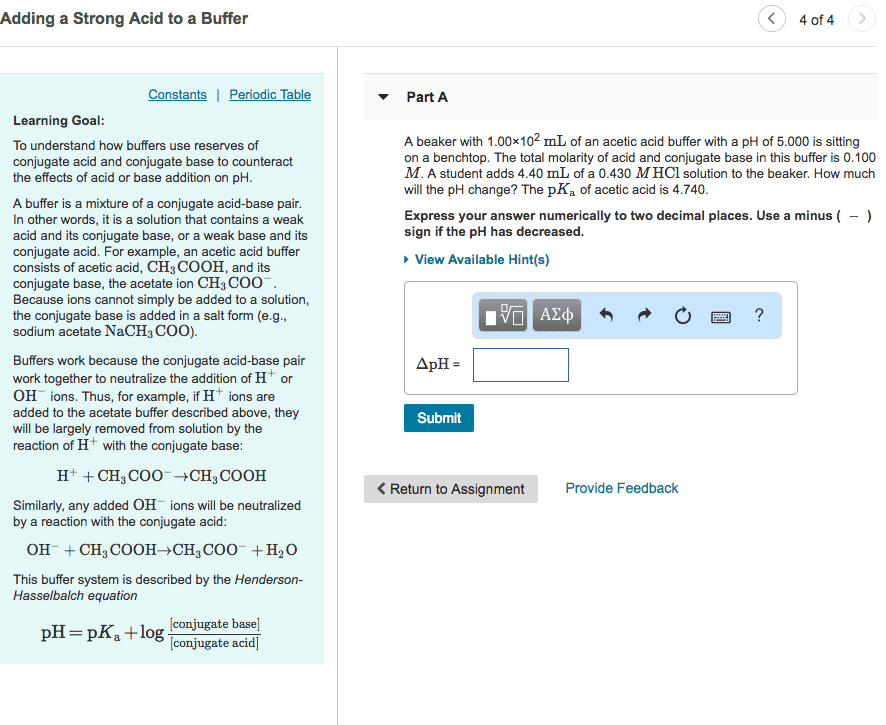CHEM 1210 Lecture Notes - Lecture 8: Acidosis, Alkalosis, Sodium Acetate
Document Summary
11:57 am ph buffers ph buffer: a solution that resists change in ph when limited amounts of acid or base are added to it. A ph buffer is an acid or base shock absorber. A ph buffer is commonly referred to simply as a buffer. The most common buffers consist of approximately equal molar amounts of a weak acid and a salt of the weak acid; that is, approximately equal molar amounts of a weak acid and a salt of its conjugate base. For example, if we dissolve 1. 0 mole of acetic acid and 1. 0 mole of its conjugate base (in the form of sodium acetate) in water, we have an acetate buffer. If we add a strong acid, such as hcl, added h3o+ ions react with acetate ions and are removed from solution. If we add a strong base, such as naoh, added oh- ions react with acetic acid and are removed from solution.


